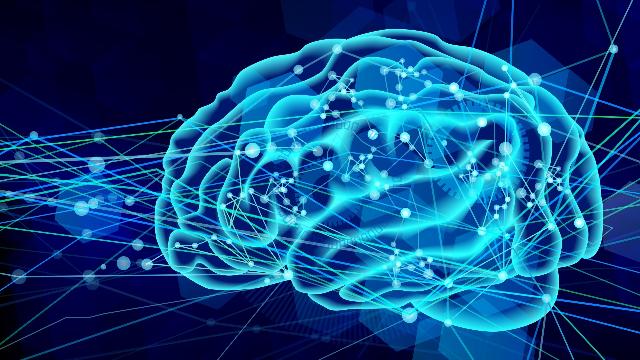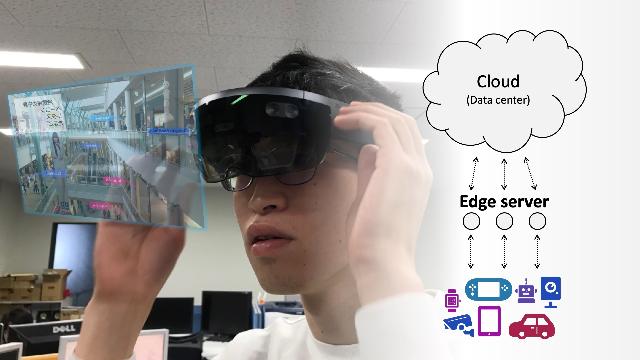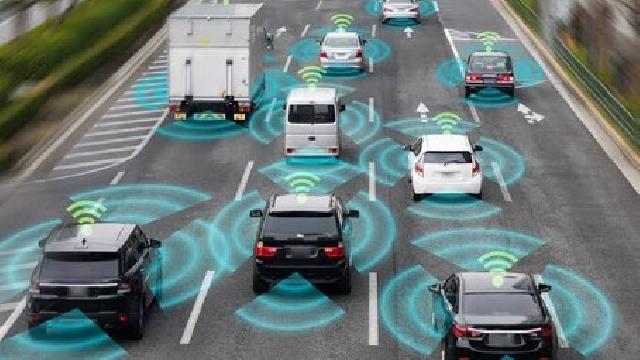
Research into mimicry of the functioning and behavior of living creatures ("biomimetics") has resulted in many inventions, such as hook-and-loop fasteners (inspired by cocklebur) and soccer goal nets (inspired by the shape of honeycombs). In the field of information and communication technology, too, many studies have applied the behavior of living creatures to problems such as networking. Recently, as networks have become larger and more complicated, it has become more difficult to understand the global status of networks and to control them appropriately. Toward solving this type of problem, we focus on swarm intelligence, which is seen in flocking birds and schooling fish. This swarm intelligence is social behavior arising from the autonomous behaviors of individuals, and we believe that applying this concept will enable distributed and adaptive network control.
We focus on communication between living creatures. Specifically, we plan to apply mathematical models to acoustic communication among Japanese tree frogs in order to model a network. To do so, we estimate the location of frogs and conduct experiments in real environments where frogs live, such as the Oki Islands of Japan.
An additional focus of our laboratory is understanding suitable mappings between groups in the natural world and networks in the Internet of Things (IoT). IoT networks include many and varied sensors and devices, and control of such networks could benefit from the advantages of biological systems, which achieve scalability, robustness, and adaptability under conditions of environmental change. We are particularly interested in models of the collective decision-making of groups with leaders, which may allow network control that can reach target states more quickly by designating leader nodes to guide the behavior of other nodes.

Human brains are very good at solving problems. It is reported that it takes the K computer (a massive supercomputer cluster) 40 minutes to reproduce a single second of human brain activity. The brain carries out extremely complicated processing but uses only a fraction of the energy used by a supercomputer to do so. The human brain is composed primarily of connections among neurons, and the resulting network has high communication efficiency and robustness. We believe that these characteristics of the brain network can be mimicked to construct an information network composed of the connections among routers and/or devices. We aim to use computing resources more efficiently and to improve network performance (delay time, communication bandwidth, and fault tolerance) by a proposed method of constructing a computing network with the characteristics of the brain network.
We focus not only on the structure of brain networks but also on ways that perception functions in the human brain. Humans can use ambiguous and uncertain information to make situationally appropriate decisions to a high degree of certainty. An example of applying this cognitive mechanism to technology would be a video player that can use cognitive functioning to automatically select an appropriate quality for display images according to the network environment, thereby improving the quality of experience (QoE) for the viewer. In addition, we are conducting research to estimate the degree of satisfaction (QoE) for watching videos by measuring electroencephalogram (EEG) of people who are watching the videos. Through the EEG measurement, we aim to realize network control technology that more closely matches the human experience by using technology to estimate QoE from human biological information. ( About Experiment (PDF)) We conduct research that applies findings from the field of brain science to research in the field of information networks.

Have you encountered MR? MR technology merges real and virtual worlds by overlaying virtual world information on the real world in real time. Though most current MR applications run offline, it is expected that they will connect to networks in the future. So-called 5G networks are being built in anticipation of increasing use of services, such as MR, that demand high bandwidth and real-time processing. The main features of a 5G network are multi-connection ability, high speed, high capacity, and low delay. Edge computing is one technology used in achieving these aims. Edge computing is a new form of information processing that is expected to work in tandem with cloud computing. For this pairing, a new processing base (an "edge server") is placed near users, such as at a mobile phone base station, and the edge servers, rather than a cloud data center, provide service to users. This structure can reduce delay caused by geographical factors and load concentration, which are problems in traditional cloud computing.
In the shopping mall experience service that we are developing as an implementation of network-oriented MR, a user wearing an MR headset cooperates with a robot in a shopping mall by video streaming or gesturing. Users can shop from home as if they were actually there. Since it is necessary to process the video taken by the robot in real time, we are considering the use of edge computing to improve the responsiveness of the application and raise the user's QoE.

Do you know the term “CPS (Cyber Physical System)”? CPS is the system which solves many kinds of social problems by integration of cyber space and physical space. For example, in autonomous driving, traffic optimization and collision prediction between vehicles are realized by gathering position and velocity information from vehicles in physical space and analyzing it in cyberspace, sending feedback to vehicle in physical space. In this system, 4G or 5G mobile communication system plays an important role of connects physical space and cyber space. 4G or 5G mobile communication system has already been used as a means of gathering sensor information from physical space to cyber space and sending feedback from cyber space to physical space. Further development of CPS requires information communication infrastructure which enables faster and finer synchronization of cyber space and physical space and high reliability. Recently, requirement of next generation communication system Beyond 5G/6G, the key technology for the future CPS, has been considered in the industry and academic society. Technology development through researches on elemental technology for CPS using 5G is essential for realization of sophisticated CPS in Beyond 5G/6G era.
In Murata Laboratory, we are researching on next-generation computing, which is an elemental technology for CPS of Beyond 5G/6G. For example, one of our research projects is “5G-based collision prediction and warning system between vehicles”. For collision prediction and warning between vehicles, it is necessary to gather position and velocity information of vehicles and feed it back in real time in order to accurately detect the ever-changing road traffic conditions and avoid potential dangers. The problem here is the increased delay in information transmission and analysis processing. In this research, we are working on improving the real-time performance of inter-vehicle collision prediction and warning system using 5G and edge computing technology. Currently, we have conducted an experiment using a collision prediction and warning system using 4G as a first step. In the experiment, we have confirmed that the worst-case response time to a virtual collision prediction request can be reduced by up to 30% by introducing the Realtime Linux environment. In the future, we plan to measure the response time to virtual collision prediction requests using 5G and edge computing environments built with actual equipment, and statistically analyze and evaluate the effect.

In recent years, much attention has been paid to improving the working environment that surrounds us, and a work style that is conducive to an individual work-life balance has been recommended. However, as working hours are shortened, there is a demand for increased production efficiency, which in turn increases worker stress when viewed on a per unit hour basis. This may instead undermine the state in which individuals are able to stretch out without stress.
Our research group has proposed a new method that combines multimodal integration processing with Yuragi learning, and has confirmed that it is possible to estimate stress that captures individual differences. In general, it is known that certain biological reactions appear under mentally stressful conditions, and it is possible to estimate the state of mental stress from biometric information. Based on this method, this research is estimating an individual psychological state based on biometric information obtained from the individual using wearable sensors, and controlling air conditioning equipment according to the estimation results to realize a space in which people can spend time comfortably (well-being space). We have proposed and implemented a method for estimating the stress/non-stress state of a room in relation to its temperature and humidity, controlling air conditioning equipment in real time based on the estimated results, and creating a comfortable environment for each person by using multiple actuators.

Have you ever interacted with AI before? In recent years, AI technologies have made remarkable progress and are now being utilized in a wide range of fields, including image recognition, natural language processing, and autonomous driving. As AI continues to become more integrated into our daily lives, ensuring trust-in terms of safety, security, and reliability-has become an increasingly important issue.
One area gaining attention is Edge AI, where AI processing is performed not only in the cloud but also on devices and servers located at the edge of the network. From a trust perspective, Edge AI offers advantages in terms of security and privacy due to its decentralized nature. However, it also raises new challenges: it becomes more difficult to determine where a given computation was executed, making it harder to ensure the reliability and consistency of AI outputs.
At our lab, we are working on building an AI Trust Platform-a framework for distributed edge computing environments that addresses these issues. By integrating technologies such as non-interactive zero-knowledge proofs and blockchain, this framework makes it possible to verify which edge server or device executed a given AI process. Through this approach, we aim to establish foundational technologies that support the deployment of highly trustworthy Edge AI in society. In the short term, as a step toward achieving trust in AI, we are also developing technologies for verifying the authenticity of information sources and analyzing misinformation.
Achievement
Further information on the research of our laboratory can be found in our annual research reports. Each academic year, we organize our research achievements and provide a list of our published papers. In the report, the research background, the research topics, the list of published papers, and the research staff for the academic year are listed in Japanese. Many papers in the list are written in English.
Please read our latest report. We would appreciate your frank opinions.